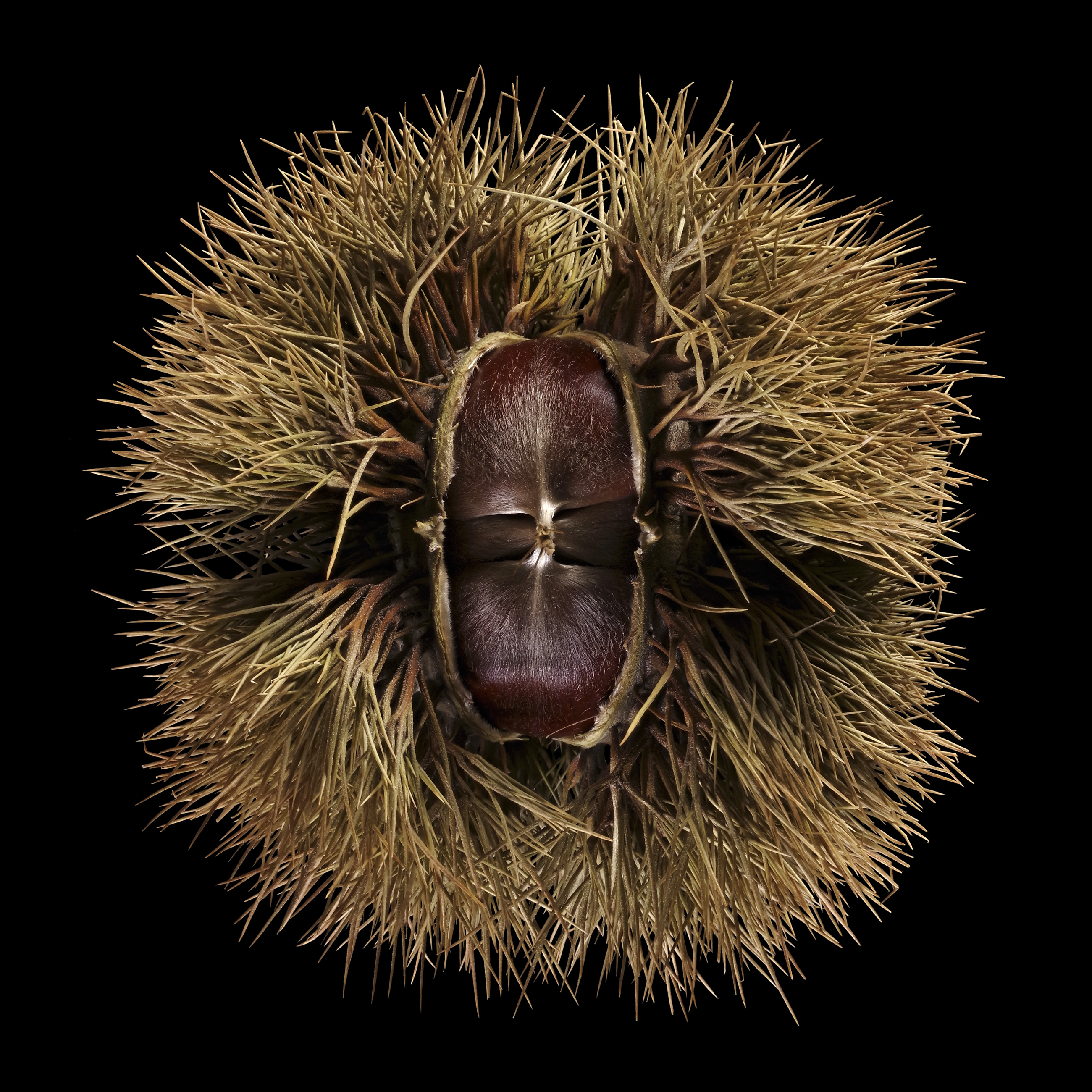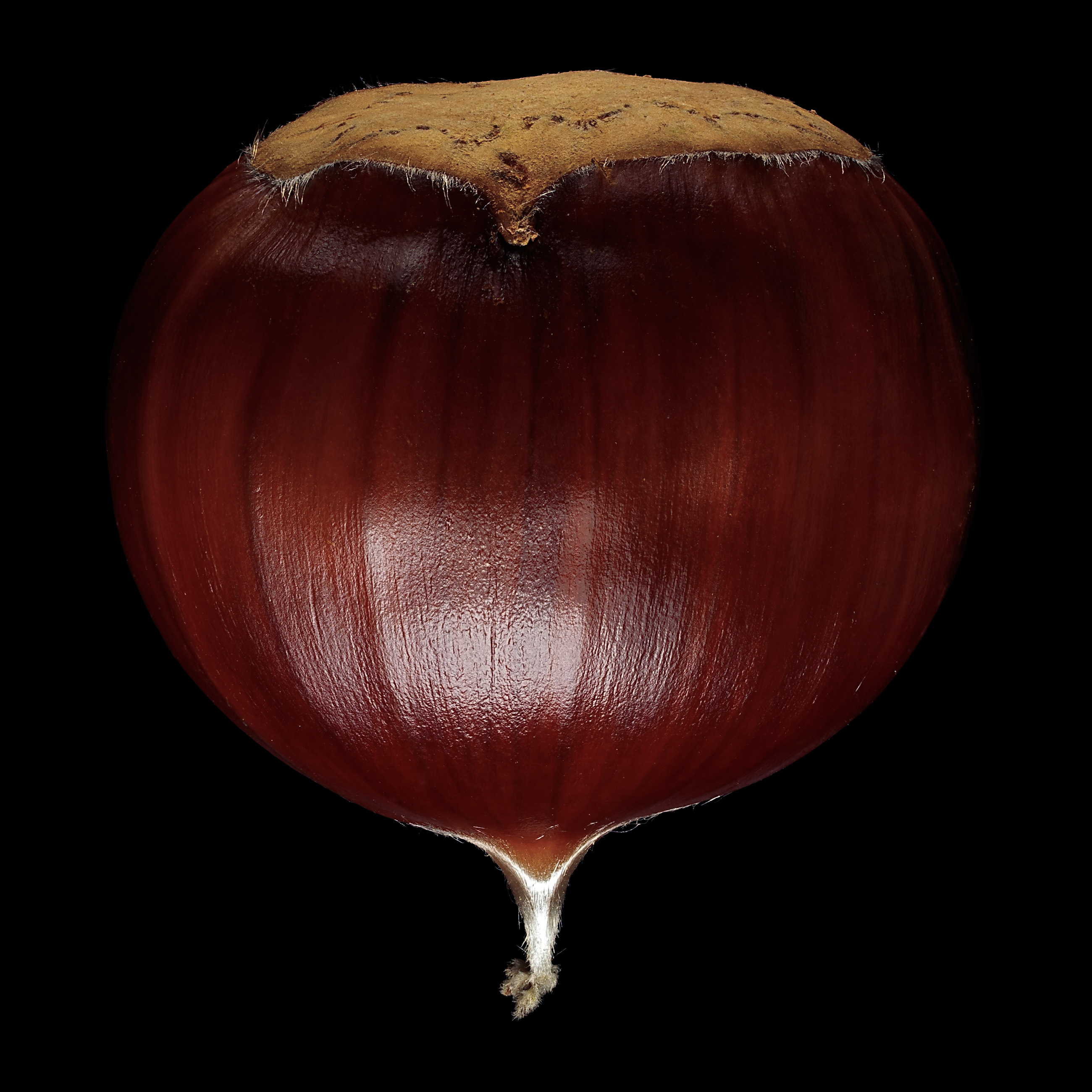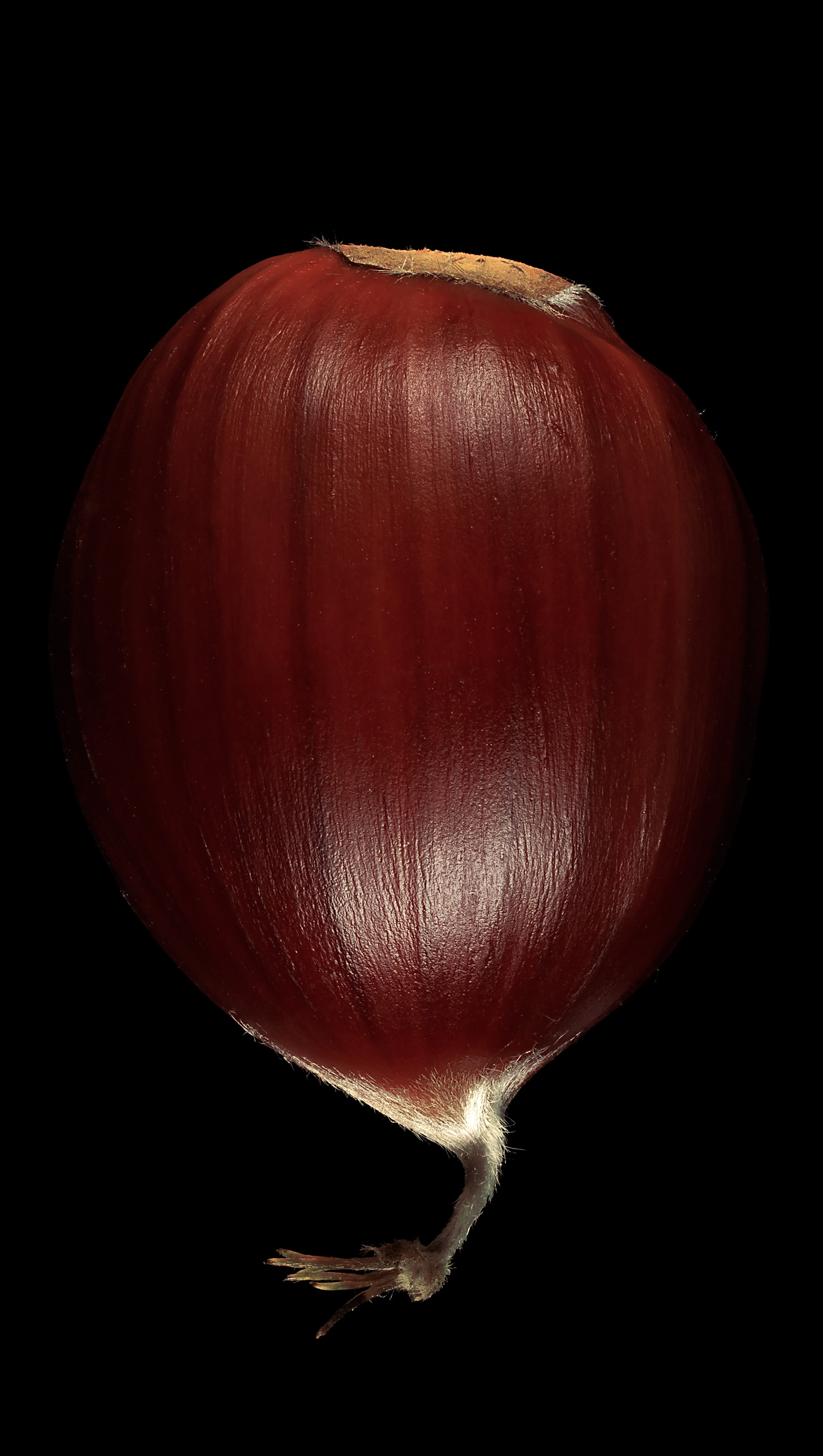Sweet chestnut: Castanea sativa
Incredibly versatileI remember how I used to gather sweet chestnuts in the park with my brother and father as a child. And how they sometimes exploded when roasting in the oven with a loud bang. And then how the oven looked.
If I prepare fresh chestnuts in the autumn, then I prefer to cook them in water (first always prick with a knife!). I prefer to buy hot, roasted chestnuts on the Christmas market. Then they are like potatoes with a sweet, nutty flavor.
The list of preparation options for eating chestnuts is long: cooked (and always peeled, of course), they can replace potatoes in many places, for example as filling and chestnut puree. Chestnut flour can be added to baked goods but is not bakeable alone because chestnuts don’t contain gluten. Pasta and pastry products can finally be made from flour mixtures with sweet chestnut flour. Candied in syrup or sugar they are not only durable, but also basis for chestnut glacés. The dessert Vermicelle or Vermicelles is made from sweet chestnut and other ingredients in Switzerland. Other traditional desserts are Castagnacci (chestnut bread), Necci (pancake), Pallotte (marinated in fennel water), ice cream, crème de marron, chestnut jam and pudding. Even beer (Corsica and Switzerland) and liqueur (Italy and France) can be made from sweet chestnuts.
Chestnuts contain a lot of water and sugar, which is why they quickly go bad in the fresh state. In addition to cooking and vacuum packaging, as often found in vegetable shelves in the supermarket, the nuts can be preserved in various ways. In Turkey, sweet chestnuts, including the spiny cupules, are placed in a heap, which makes them durable through fermentaion (“Ricciaia”). In hydrotherapy, peeled maroons are placed in cold water for several days, preserved by lactic acid fermentation and finally dried.
- Edible Seed
- Type of fruit Nut
- Culinary Group Nuts Plant milk
- Also used as Flour substitutes
- Taste sweet
- Trivial Names Maroni, Marroni, Marron, Marone, Macrone, Esskastanie, Edelkastanie, Keschtn, Sweet chestnut, Portuguese chestnut, Spanish chestnut, Châtaignier commun
- size 3,5 cm (seed)
- Taxonomy Fagaceae Castanea sativa
- Origin Mediterraneum, Near East (Map)
- Locality Kleinmarkthalle Frankfurt 2018





